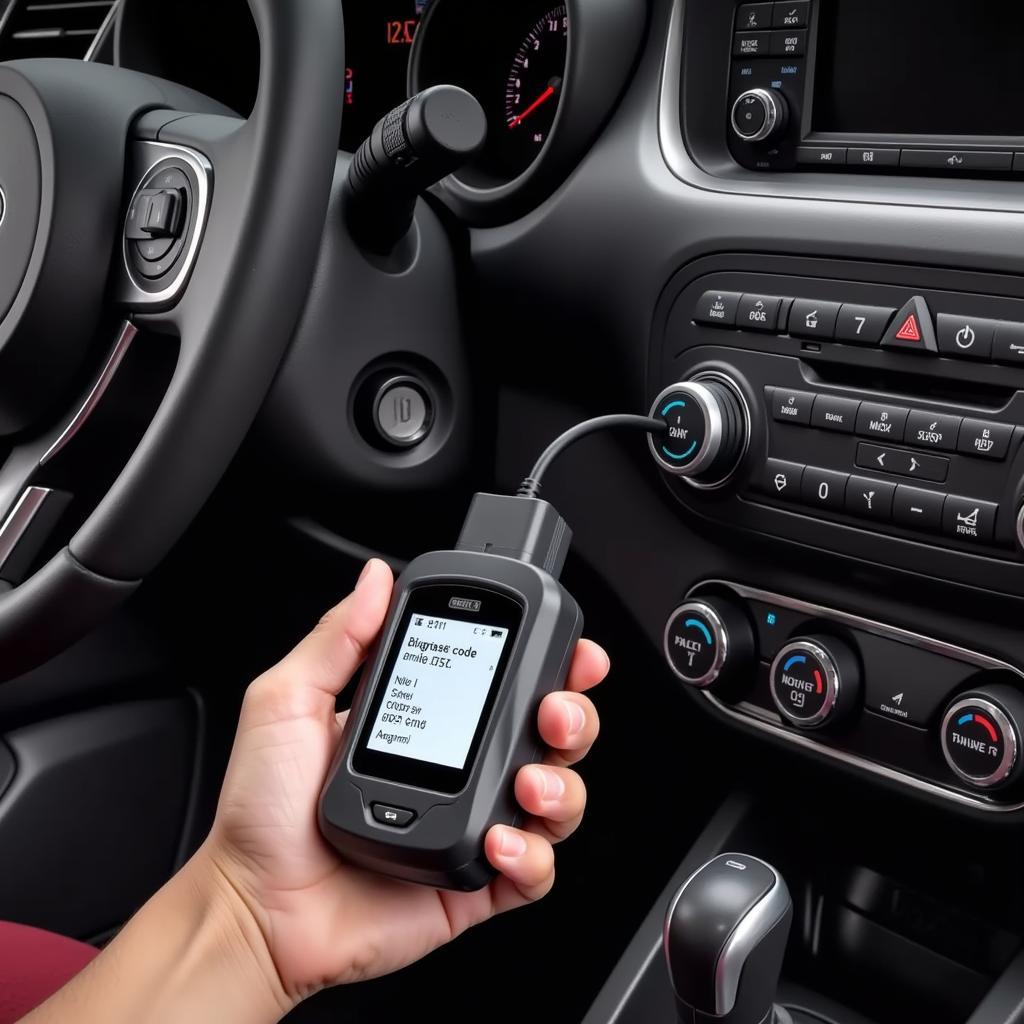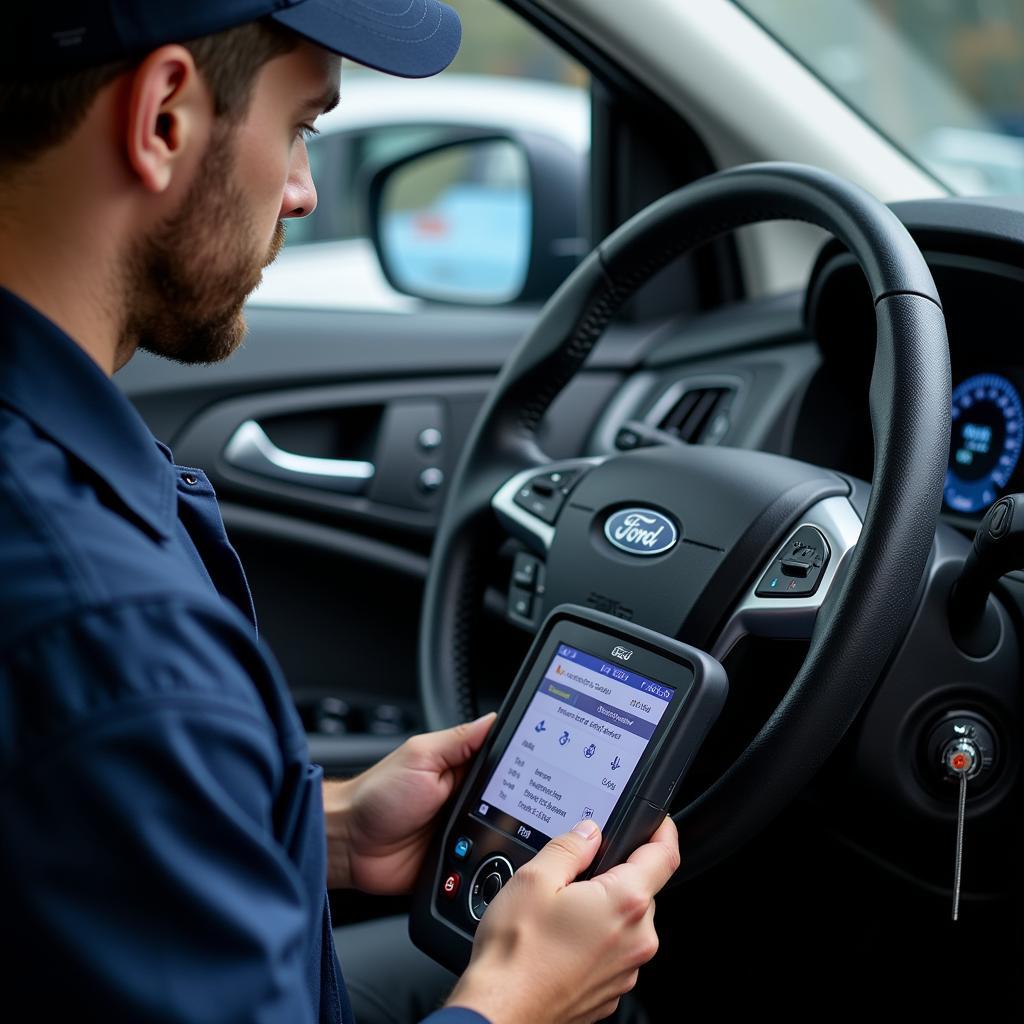Have you ever found yourself stranded on the side of the road, baffled by a mysterious car problem? It’s a scenario every car owner dreads, especially when you can’t seem to pinpoint the issue. That’s where a system scanning tool comes in – your trusty sidekick for diagnosing and troubleshooting vehicle malfunctions.
What Is a System Scanning Tool?
A system scanning tool is a diagnostic device that connects to your car’s onboard computer (OBD-II port), allowing you to access real-time data and fault codes stored within the vehicle’s systems. It’s like a decoder for your car’s language, revealing the root cause of issues ranging from engine trouble to electrical problems.
Why You Need a System Scanning Tool?
Imagine this: You’re driving down a busy highway, and your car’s “Check Engine” light illuminates. Your immediate reaction might be a pang of worry, wondering what could be wrong. Instead of resorting to guesswork and costly trips to the mechanic, a system scanning tool can help you uncover the truth.
Unlocking the Mystery of Car Problems
The data and fault codes retrieved by a scanning tool are invaluable for pinpointing the source of the problem. This allows you to tackle repairs proactively and avoid unnecessary expenses.
Empowering You to Be Your Own Mechanic
While a system scanning tool won’t magically fix your car, it empowers you to become a more informed car owner. By understanding the codes and data, you can:
- Identify the specific issue: No more guessing or relying on the mechanic’s interpretation.
- Save money on diagnostics: Skip the costly trip to the shop and diagnose the problem yourself.
- Prevent further damage: Early identification of potential issues allows you to address them promptly, preventing major breakdowns.
Types of System Scanning Tools
Dealer Scanner for European Cars
Dealer-level scanners, like the Autel MaxiCOM MK808, offer the most comprehensive diagnostics for European vehicles. These tools can access proprietary protocols and deep system data, making them ideal for advanced troubleshooting. For example, you can identify issues with specific modules like ABS, airbag, and engine control units.
autel-maxi-com-mk808|Autel MaxiCOM MK808 Scanner|Autel MaxiCOM MK808 Scanner connected to a car’s OBD-II port, with its screen displaying diagnostic data and fault codes.
Universal Scanners
These scanners, such as the Launch X431 Pro 5, are compatible with a broader range of car makes and models. While they may not have the depth of dealer scanners, they are a great option for general diagnostics and accessing basic fault codes.
DIY Scanners
For casual users and those looking for a basic understanding of their vehicle’s health, budget-friendly DIY scanners like BlueDriver or OBDLink MX+ provide a user-friendly interface for reading and clearing basic fault codes.
obdlink-mx-plus|OBDLink MX+ Scanner|OBDLink MX+ Scanner connected to a car’s OBD-II port, with its screen displaying a list of fault codes.
What to Consider When Choosing a System Scanning Tool
Compatibility
Before purchasing a scanner, ensure it’s compatible with your vehicle’s make, model, and year. Consult the manufacturer’s website or product descriptions for compatibility details.
Functionality
Consider the features and functions you need. Some scanners offer advanced capabilities like live data streaming, graphing, and ECU coding, while others provide basic diagnostics only.
Ease of Use
Choose a scanner with an intuitive interface and clear instructions, especially if you’re a novice mechanic.
Price
Scanners range from affordable DIY options to professional-grade tools with higher price tags. Determine your budget and choose a scanner that fits your needs and financial constraints.
Frequently Asked Questions
Can I Use a System Scanning Tool to Clear Fault Codes?
Yes, many scanners allow you to clear fault codes after addressing the underlying issue. However, clearing codes without diagnosing the problem might mask the issue and lead to further complications.
Are System Scanning Tools Legal?
Using a system scanning tool for diagnostic purposes is generally legal. However, some scanners may be illegal for specific activities like modifying engine parameters or reprogramming the vehicle’s ECU.
Can I Use a System Scanning Tool on Any Car?
Not all scanners are compatible with all vehicles. Some are specifically designed for certain makes and models, while others offer broader compatibility.
How to Use a System Scanning Tool
- Connect the scanner to the OBD-II port: This port is typically located under the dashboard, near the steering column.
- Turn the ignition on: This allows the scanner to communicate with the vehicle’s computer.
- Select your vehicle: Input the vehicle’s make, model, and year using the scanner’s interface.
- Retrieve data and fault codes: The scanner will display real-time data and any stored fault codes.
- Interpret the information: Use the scanner’s manual or online resources to understand the meaning of the codes and data.
- Address the issue: Based on the diagnostic information, you can either attempt to repair the problem yourself or take your car to a mechanic.
Conclusion
A system scanning tool is a valuable investment for any car owner, empowering you to take control of your vehicle’s health. By understanding how to use a scanning tool, you can diagnose issues early, prevent costly repairs, and maintain the longevity of your car.
If you need assistance with setting up your system scanning tool or have any further questions, don’t hesitate to reach out to our team of automotive experts via WhatsApp: +84767531508. We’re here to help 24/7!
mechanic-using-scanner|Mechanic using scanner|A mechanic using a system scanning tool to diagnose a car problem.
Explore More:
Share your thoughts and experiences in the comments below!


